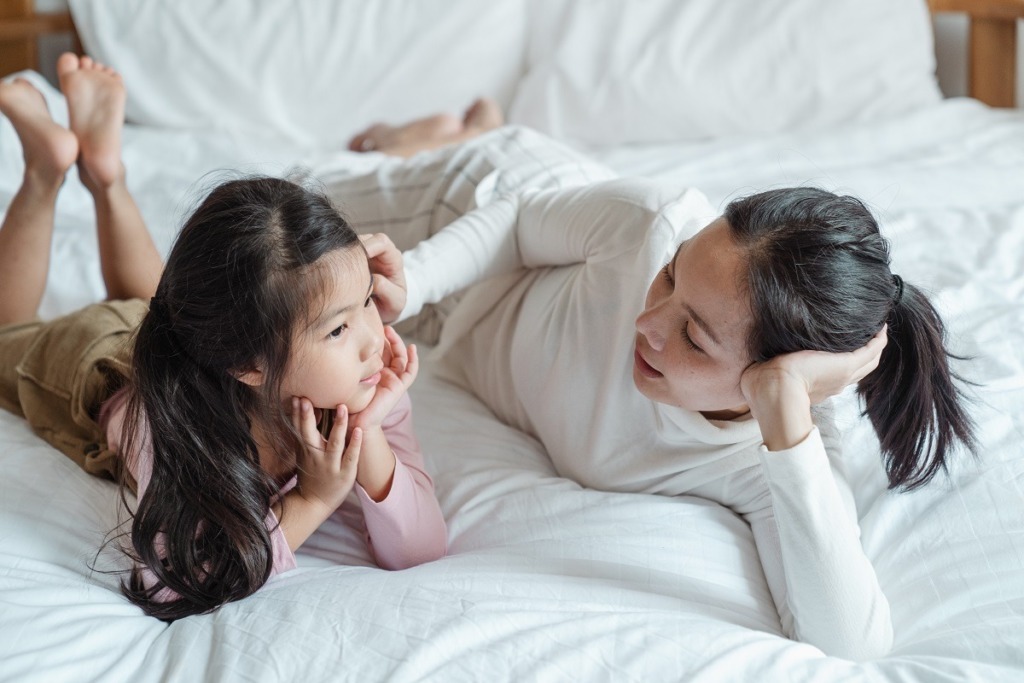
Written by Dr Melissa Keogh, Clinical Psychologist
Oftentimes, parents of children who are displaying symptoms of anxiety are unsure as to how to help their child. It can indeed be difficult to know the right course of action to take or the right words to say when a young person is constantly seeking reassurance and excessively worried.
So, what to do?
The first step in helping a child with anxiety is to recognise the signs.
Signs of Anxiety in Childhood
Some of the most common indicators of anxiety in children are:
- clingy behaviour
- repeated requests for reassurance
- stomach aches or headaches
- school refusal
- difficulty sleeping
- excessive worry (i.e., greater than age related peers)
- avoidance of fearful situations
- a number of different fears such as a fear of the dark, dogs or injections.
Whilst some worry and anxiety are normal during childhood, symptoms that are severe, persistent, age-inappropriate and interfere with functioning may indicate a mental health issue.
Some of the most common anxiety disorders in childhood include:
- Generalised Anxiety Disorder which is characterised by excessive worry regarding a broad range of issues (e.g., friends, schoolwork, home). The worry is typically difficult to control and sleep difficulty and irritability are common;
- Social Phobia which presents as extreme shyness and a fear of being thought of in a negative way by others. Symptoms include difficulty initiating conversation, speaking up in class or speaking in front of others;
- Separation Anxiety whereby the child becomes excessively (and age-inappropriately) fearful, clingy and upset upon separation from their parent/ caregiver. This can impact on the child’s ability to attend school camps and sleepovers.
- Post Traumatic Stress Disorder which includes anxiety following a serious or life threatening event such as witnessing the death of a loved one or a natural disaster such as a bushfire. Symptoms include an exaggerated startle response (i.e., overly jumpy), nightmares, flashbacks, and a feeling of re-experiencing the event. Children may attempt to process the trauma through creative pursuits such as play or painting/drawing.
- Specific phobia which is a persistent and disproportionate degree of fear regarding a particular objects or situation such as spiders.
In addition to familiarising oneself with how anxiety presents in young people, as a parent it’s also important to respond in a manner that is supportive and does not add to the child’s distress.
The steps below outline a way for parents to gently and lovingly navigate their way through anxiety with their children.
Step 1: Connect
This first step involves taking time out from what we are doing for a brief moment, where possible when your child first raises their feelings of anxiety.
Take a deep breath in and look your child in the eye as they speak to you.
Step 2: Listen
Practice your best listening skills and use mindfulness techniques to help you here – pay attention to the tone and volume of their voice and the words they are using. Be sure not to interrupt them and let them speak, even if you have a different opinion or point of view or believe they should not be worried.
You can also observe their facial expressions and their body language. Are they fidgeting, shaking, looking down, or crying?
Step 3: Acknowledge and Reflect
Acknowledging your child’s distress and reflecting back to them how they are feeling is an important step as it helps them to feel heard and understood, and ultimately reduce distress.
For example, you may say “I’m hearing you say that you are feeling anxious and scared about going to a new high school next year and that this is keeping you awake at night. You are worried about finding your classrooms on time and making new friends. Is that right?”.
If you have time you may say “tell me more” and/or “what is that like? And “where in your body do you feel anxious?”.
For children who have difficulty identifying their feelings, you can use a feelings wheel or list of feelings.
Step 4: Empathise
Before attempting to progress further with an anxious child, especially prior to doing any problem solving, it’s best to first demonstrate empathy.
To show empathy we can simply say “That must be hard” in a genuine and authentic tone. Pause for a good moment here and then ask your child if they would like a hug.
Step 5: Problem Solve
Next, we want to problem solve and come up with some action to take.
Often children will generate their own solutions to their problems if asked and usually in very unique, intelligent and creative ways. Don’t be afraid to ask your child “what do you think we should do about this?
If you and your child are unable to manage the anxiety at this point some extra evidence-based strategies may help.
Step 6: Implement Strategies
For anxiety, I highly recommend deep belly breathing and mindfulness meditations. The Smiling Mind App is a great resource.
Another technique, based on Cognitive Behaviour Therapy (CBT), is to ask a series of rational questions.
To do this you may ask questions such as:
- What’s the worst thing can happen? (*For older children you can ask “Realistically, what’s the worst thing that can happen?”)
- What the best thing that can happen?
- What is most likely?
- What will you/we do if the worst thing does happen?
- What would my favourite superhero do?
- What would I tell my best friend to do?
For further advice regarding strategies to manage anxiety, you can speak to your doctor about a referral to a psychologist. Ask your GP about a Mental Health Care Plan.
The Australian Psychological Society’s Find A Psychologist service may also be of assistance in locating a practitioner.
And on a final note, the good news is that anxiety tends to respond well to treatment.
What To Do When Your What To Do When Your What To Do When Your



